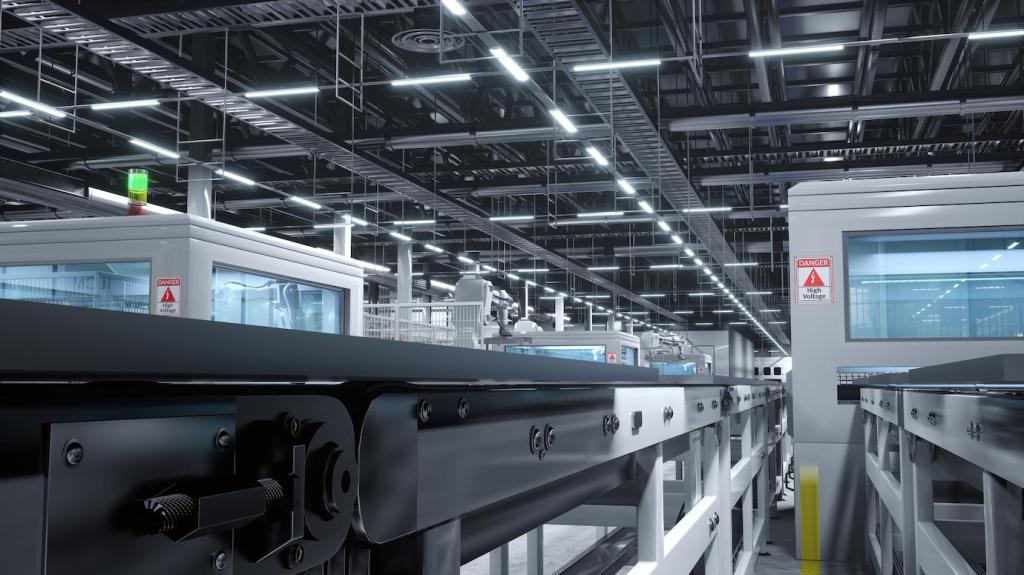
AI for a Circular Future: Reduce Waste, Boost Efficiency
Selected theme: AI and the Circular Economy: Reducing Waste and Enhancing Efficiency. Welcome to a space where data closes loops, products live longer, and waste becomes opportunity. Together, we’ll explore practical ways intelligent systems help businesses design out waste, optimize resources, and spark a culture of regeneration. Subscribe, comment, and co-create this circular journey with us.
Mapping Material Loops with Intelligent Data
Build a digital twin that tracks materials from sourcing to end-of-life, enriched with machine learning for anomaly detection and recovery options. When data flows, circularity becomes visible: hotspots pop out, reuse paths emerge, and decisions move from guesswork to measurable impact. Share your data pain points and we’ll explore solutions together.


Smarter Collection and Sorting: Vision, Robotics, and Engagement
Computer Vision That Knows Its Plastics
Imaging models distinguish polymers, films, and labels in real time, guiding sorters to the right streams. The payoff isn’t just throughput; it’s purer bales that command higher prices and re-enter quality manufacturing. Have a tricky material your MRF struggles with? Tell us and we’ll discuss training data strategies.
Robots That Learn Contamination Patterns
Robotic arms adapt pick strategies based on contamination maps and time-of-day patterns. By learning local behaviors, they recover more, miss less, and keep organics out of recyclables. If your facility sees weekend spikes or holiday anomalies, consider a model that anticipates them. Want a template? Ask in the comments.
Community Nudges and Feedback Loops
Gamified apps deliver personalized feedback on sorting habits, while anonymous neighborhood dashboards show collective progress. When residents see cleaner streams turning into local products, participation endures. Would you pilot a weekly “clean stream” leaderboard? Subscribe for our playbook and share what motivates your community.
Circular Supply Chains Through Better Forecasts
Probabilistic forecasting helps teams choose smaller, more frequent production runs, reducing overproduction and markdowns. Paired with scenario planning, it highlights when postponement or modular assembly avoids stranded inventory. What forecast horizon matters most for you? Drop a note, and we’ll suggest a tailored modeling approach.
Circular Supply Chains Through Better Forecasts
Optimization models reposition stock to where reuse, refurbishment, or secondary markets are strongest. Instead of dead inventory, you get living inventory that re-enters value streams. If you’ve written off slow movers before, consider a circular outlet model. Comment to get our checklist for secondary-market readiness.

Remaining Useful Life, Measured and Managed
Machine learning estimates remaining useful life so service teams can refresh components just in time. This prevents premature replacements and captures parts for remanufacture at peak value. Which signals—usage, environment, or repair history—are you tracking today? Tell us, and we’ll suggest features that boost accuracy.
Reverse Logistics as an Optimization Game
Routing models decide whether to repair locally, consolidate for reman, or harvest parts, minimizing transport emissions while maximizing recovery value. Visual dashboards make trade-offs explicit. Want a starter KPI set for circular returns? Subscribe, and we’ll send a concise, field-tested scorecard.
Shared E-Bike Fleet Anecdote
A citywide e-bike operator used anomaly detection to pre-empt battery issues and introduced modular swaps. Service incidents fell, and spent modules were funneled into certified remanufacture. Riders noticed only that bikes ‘just worked.’ What service reliability goal would most accelerate your circular shift?
Link your AI initiatives to verified carbon, water, and waste metrics. Use lifecycle assessment and counterfactual baselines to prevent hollow claims. If metrics feel messy, you’re not alone—share your toughest boundary questions, and we’ll unpack them in a future post. Subscribe to follow the metrics series.




